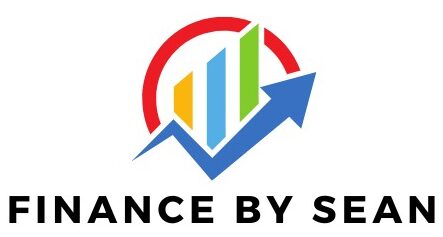If you’re looking to learn how to manage your money, you’ve come to the right place!
Either you’re getting serious about managing your money, or you’re part of the statistics showing financial struggles (Bankrate Survey).
Let’s go on a step-by-step journey to get started easily!
Table of Contents
- Figure Out How Much You Earn
- Make an Expense Plan
- Track Your Spending
- Prepare for an Emergency
- Get Rid of Bad Debt
- Automate Using Technology
- Create Financial Goals
- Start Investing
- Level Up Your Financial Knowledge
- Scenario: Applying the Steps
- Conclusion
1. Figure Out How Much You Earn
Knowing where your money comes from is just as important as knowing how to spend it.
You must understand how much money enters your bank account every two weeks to create a realistic financial plan.
If you’re an employee with a fixed hourly rate or a salaried job, simply calculate how much you earn.
For example, if you make $25 an hour and work 40 hours per week, that equals $1,000 per week, $4,333 per month, or $52,000 per year.
If your income fluctuates, take an average of how much you earn monthly, quarterly, or even annually, depending on your work.
2. Make an Expense Plan
Most people prefer not to call it a budget because many people associate that word with being restrictive.
However, having a set spending amount for different expense categories allows you to be smarter with your hard-earned money.
Check out my other blog post for more details on how to create an effective expense plan.
3. Track Your Spending
I personally don’t track my expenses daily but review them monthly or quarterly since it saves time and effort.
If you’re just starting, try tracking your spending daily or weekly before transitioning to a less frequent schedule.
As you start noticing spending patterns, budgeting will become second nature. However, it’s still good to check in occasionally to ensure you’re staying on track.
There are plenty of apps that create visual reports with pie charts, making tracking your spending easier. Check out Rocket Money here.
4. Prepare for an Emergency
If you’re reading this, I bet you’ve faced an unexpected financial challenge at some point.
Whether it’s a medical issue, a car breakdown, or helping a family member, these surprises can derail your finances.
Having insurance, an emergency fund, and allocating a set amount each month can help you stay financially stable during tough times.
5. Get Rid of Bad Debt
Debt can either be good or bad. Good debt, such as a mortgage or student loan, can help build your future. However, bad debt—like credit card debt, payday loans, or high-interest personal loans—can drain your finances.
To eliminate bad debt:
- Prioritize paying off the highest-interest debts first (avalanche method) or start with the smallest balance for psychological wins (snowball method).
- Avoid accumulating more debt by cutting unnecessary expenses.
- Negotiate lower interest rates with creditors.
Example: If you have a credit card with a $5,000 balance and a 20% interest rate, you’re paying around $1,000 per year in interest alone! Paying more than the minimum each month can help you get rid of it faster and save thousands in the long run.
Check out this book by Dave Ramsey to learn different strategies for becoming debt-free quickly.
6. Automate Using Technology
We live in an age where technology makes financial management easier than ever.
- Set up automatic transfers to your savings and investment accounts.
- Automate bill payments to avoid late fees and missed payments.
- Use budgeting apps to track and manage expenses effortlessly.
7. Create Financial Goals
Having clear financial goals helps you stay focused and motivated.
- Define short-term, medium-term, and long-term financial objectives.
- Allocate funds accordingly to reach these goals.
- Regularly review and adjust your goals as needed.
8. Start Investing
Investing is key to building long-term wealth.
- Consider investing in index funds, stocks, bonds, or real estate.
- Start small and increase contributions as you gain confidence.
- Diversify your investments to minimize risks.
9. Level Up Your Financial Knowledge
No one will care more about your money than you do!
- Read books, blogs, and articles about personal finance.
- Listen to podcasts or watch videos from finance experts.
- Learn to identify scams and bad financial advice.
10. Scenario: Applying the Steps
Let’s take Luna as an example—a 30-year-old marketing professional earning $4,500 per month after taxes. She wants to get out of debt, save for an emergency fund, and invest for the future. Here’s how she applies these steps:
- Income Calculation: Luna calculates her earnings and sees she takes home $54,000 per year.
- Expense Planning: She divides her monthly budget:
- Rent & Utilities: $1,500
- Groceries: $400
- Transportation: $300
- Entertainment & Dining: $300
- Debt Repayments: $800
- Savings: $600
- Investing: $600
- Tracking Spending: She uses an expense-tracking app to monitor her purchases and identify areas where she can cut back.
- Emergency Fund: She sets a goal to save $10,000 and starts putting away $500 per month into a high-yield savings account.
- Debt Reduction: She has a $6,000 credit card balance at 22% interest. She prioritizes this debt using the avalanche method, paying $800 per month until it’s gone in about 8 months.
- Automating Finances: She automates her bill payments, savings contributions, and investment transfers to stay consistent.
- Financial Goals: Her next milestone is buying a home, so she allocates $600 per month into a dedicated savings account for a future down payment.
Conclusion
Managing your money doesn’t have to be overwhelming. By taking small, consistent steps like tracking your income, creating a spending plan, and automating savings, you can take control of your financial future.
Start today! Financial freedom is a journey, and the best time to begin is now!
Now I’d like to hear from you:
Which of the ones I talk about above you’re having the easiest and hardest time with?
Is there anything I missed or you would like to add?
Either way make sure to comment down below and make sure to check out our blog financebysean.com to read more about related stuff about finance like this!





